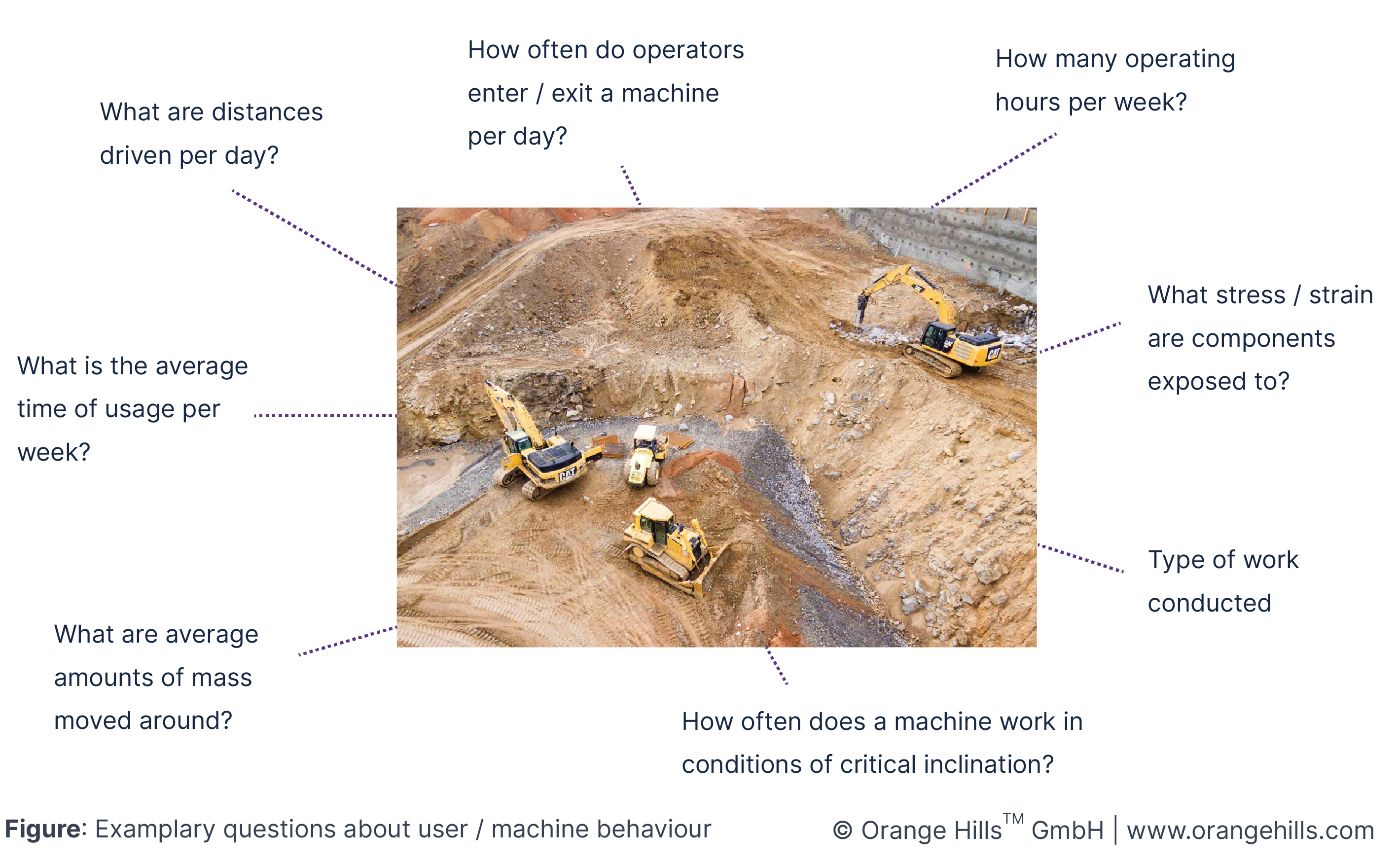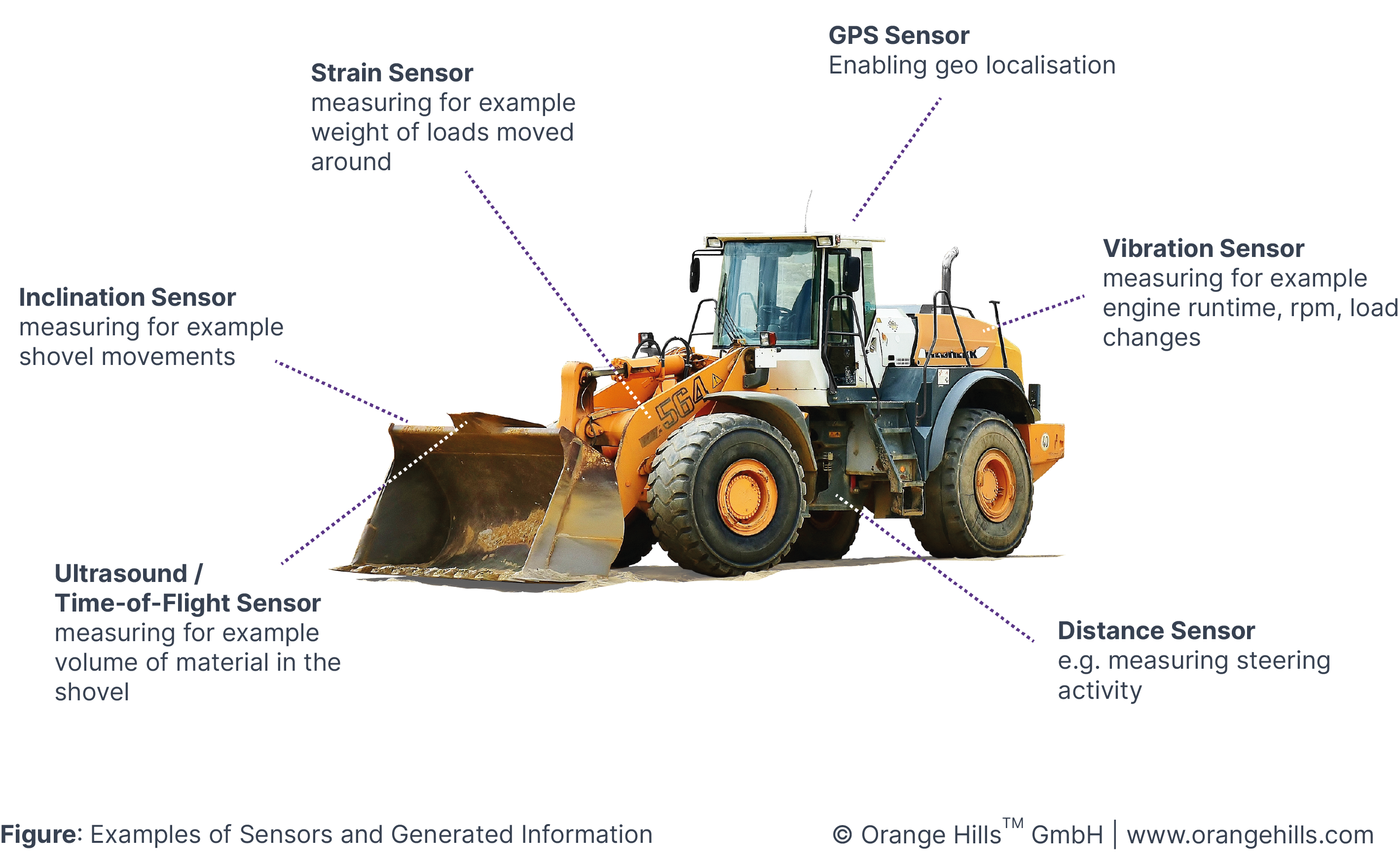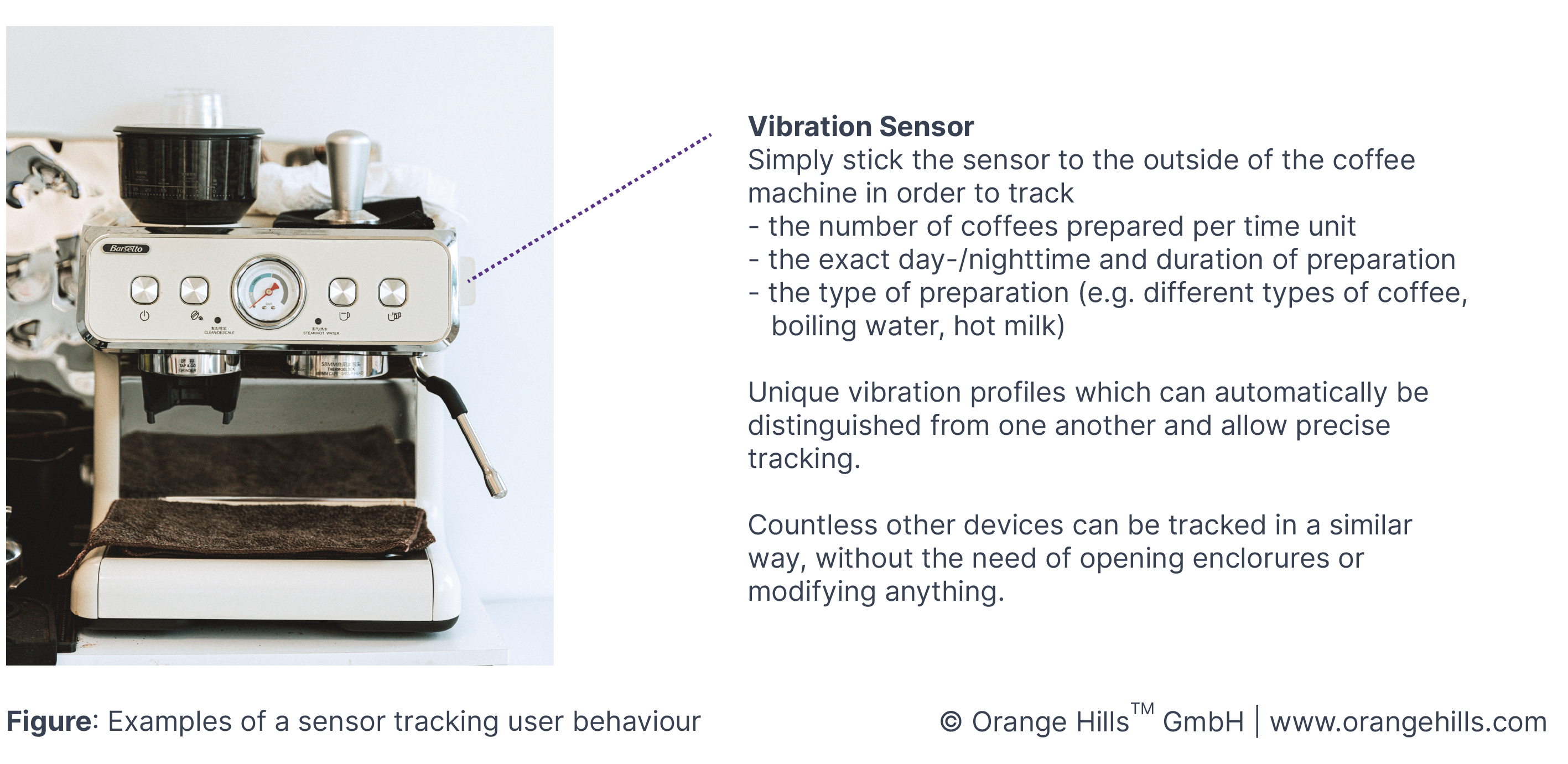Automated Tracking of User Behaviour
Some research activities require a high level of reality and therefore invisible customer observations. Learn more about automated tracking of user behavior with the help of software or sensors and how we apply this research method in Business Design sprints.
Content
1. Overview
While figuring out how to analyse user behaviour, you may notice that in some cases it might be resource wise simply impossible to get data about specific user's behaviour in the physical world by observation or interviews. Or, the sole presence of someone observing could influence user's behavior and reduce the level of reality of your experiment. Why not let invisible technology do the work for you to aggregate precise data?
2. Sensor-based Tracking
Sensor based tracking is a good way of data aggregation when specific data about user behaviour or environmental factors is difficult or simply impossible to obtain through observation or interviews.
This could be the case if
specific behaviour or environmental factor is of such nature that it cannot be quantified well or even not at all be captured through visual observation
the sole presence of observers might influence user's behaviour
a user is unlikely to be able to recall or quantify own behaviour
specific behaviour needs to be captured over a longer period of time
Examples for Sensor-based Tracking
Imagine you need to quickly understand certain processes and behaviour on a construction site over a typical week. Going there for several days for observation is time consuming. And some data such as distances driven or loads moved around by machines could not even be determined this way. And imagine you would need to get a clear picture of several different kinds of construction sites within a short time.

In order to answer these questions, sensors and automated data processing can do a great job in getting precise data over a longer time period without the need to be physically present.

Another example: Imagine you want to understand the usage patterns of a coffee machine in an office environment. Sitting besides a coffee machine for a week and noting down every interaction between user and machine might not be an option.
With sensors and some connectivity you will sit wherever you want and get real-time data about usage patterns from coffee machines from test groups all over the world if you wish. And analysed data appears on dashboards on your mobile device. Sounds futuristic? Well, that's common practice today already.

Tools for Sensor Based Tracking
Business Design IoT Sensor Kit: Our hardware platform that can be fitted with any sensor available on the market to collect and transmit data via WLAN, LTE and Bluetooth, fully integrated into the Project Dashboard for real-time data visualization. 100% tailored to the needs in Business Design projects.
3. Software-based Tracking
In many cases we want to understand users when interacting with digital products. Typical cases in the digital world are:
Tracking user's behavior (e.g. clicks, dwell time) while visiting a website or using a software
Tracking conditions (e.g. location, browser, operating system, device) while visiting a website or using a software
Example for Software-based Tracking
We use Fathom Analytics as an alternative to the well-known Google Analytics. It doesn’t compromise visitor privacy for data and is cookie-free. We can access data like visitors, views, average time on site, bounce rate, referrers, browsers, countries, devices, etc. The tracking of individual events like downloads will be added soon.
HotJar extends traditional web tracking with features that focus on usability and user experience by visualising user behavior in click heatmaps, move heatmaps, scroll heatmaps as well as mouse, click and touch recordings. Furthermore, it allows to integrate surveys and feedback polls as overlays.
Tools for Software-based Tracking
4. Instructions for Coaches
Needless to say that a team needs good data to work with. Even if an eventual offering will have nothing to do with sensors, it can make sense to use this technology to acquire best possible insights about user behaviour.
Keep in mind that almost anything can be tracked with sensors. Behaviour of people or objects as well as environmental data. Make sure your team knows all these possibilities to better understand specific situations in the actual world.
The setup of tracking with sensors can be time consuming and the evaluation of the data can be tricky. The team needs to be sure that this is still the easiest and most suitable way to get the information.
Think about combining automated data gathering with other research tools (e.g. subsequent interviews) to receive feedback from more than one perspective.
Installing (web) tracking technology is pretty easy. Teams tend to collect as much data as possible without thinking about what they want to learn from it. Take care that they collect data they really need to make decisions and that they plan how to evaluate the data (including thresholds) in advance.
Don't forget to plan how you acquire your users and how they get your product / software or find your landing page online. This shouldn't happen by accident.
Take care that the team does not violate any privacy law and their tracking is anonymous. A privacy policy is mandatory.
In case your team needs support, our prototyping engineers are familiar with commonly used tools for software and sensor-based tracking and the specific nature of Business Design processes.
5. Q & A
In our sprint we believe that sensors could help us understand users better but we are nor sure what kind of sensors could do the job and if it's at all worth the effort. Go through the process step by step of acquiring needed data "manually" in the quality required. You will get a feeling of the effort you would have to put into it. If the effort seems really high and you would therefore tend to better sacrifice insights, then that's exactly the time when Automaten Tracking makes sense.
We don't have the necessary skills in the team to work with sensors and electronics. What can we do? In many organizations there are people who are keen in electronics, often hobbyists. Try to identify these people in your organisation, you might need their skills later in sprint projects anyway. In any case, contact one of our experts. They are more than happy to help you with specific advise.
Why don't we use optical sensors or cameras to track behaviour? There's a huge progress happening in cameras and machine learning, offering great possibilities, no doubt. Automated visual tracking has advantages in very specific use cases. For most use cases that we have encountered so far, however, it seems more practical to physically put sensors directly to where we want to measure.
